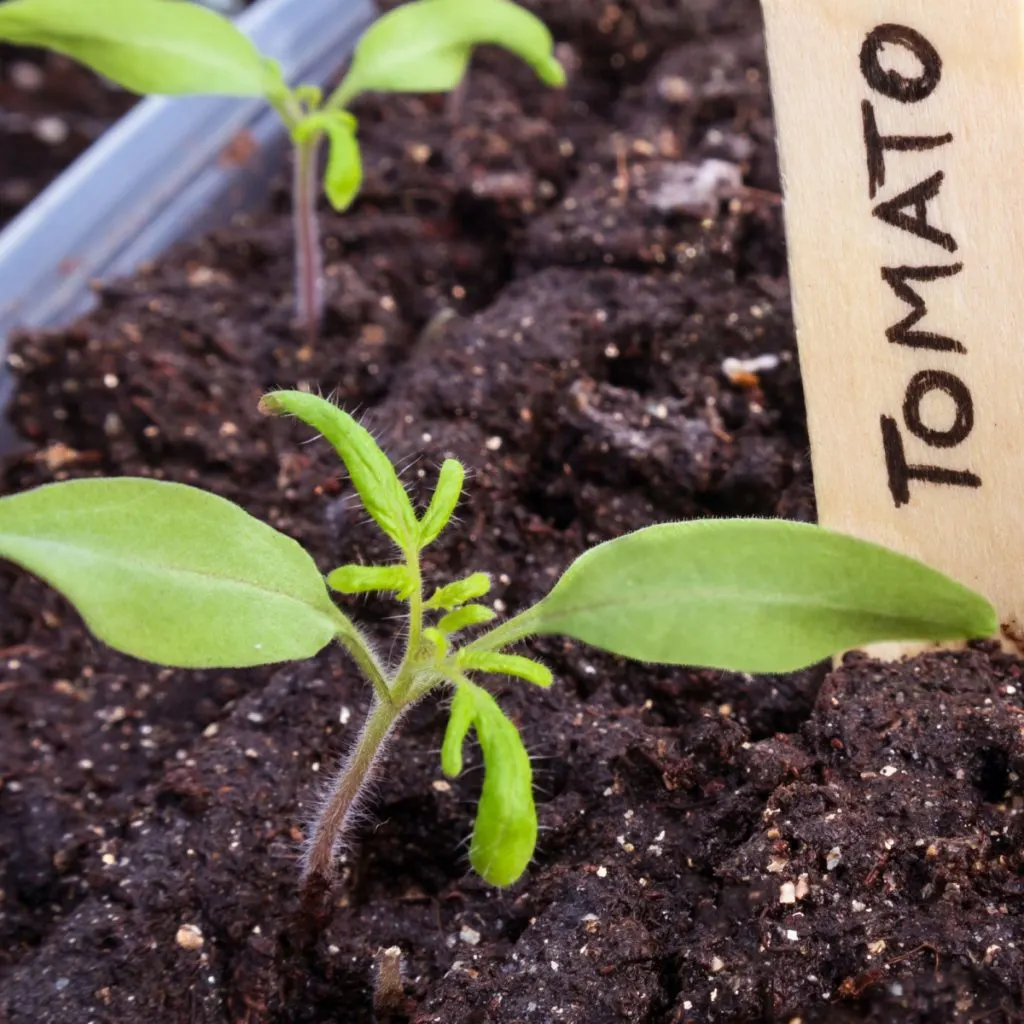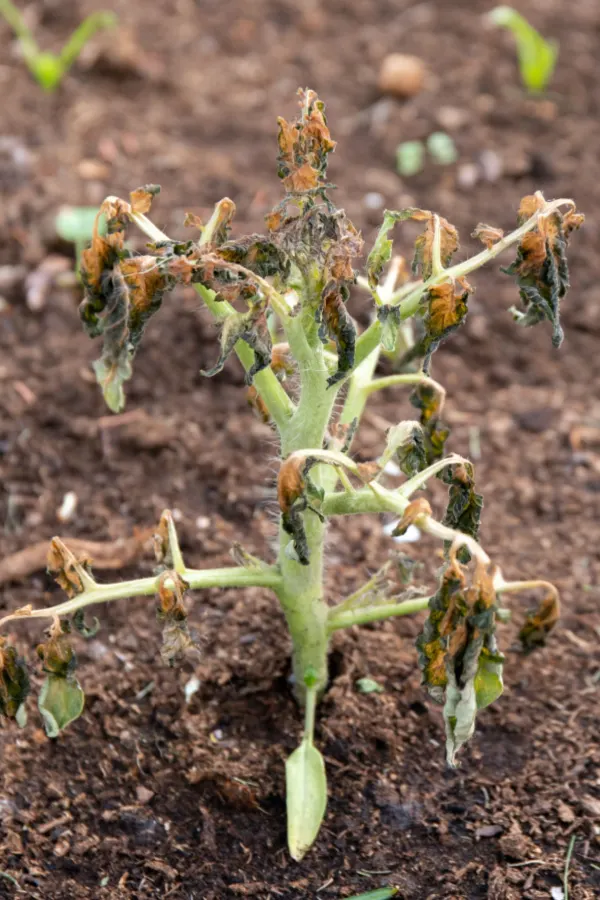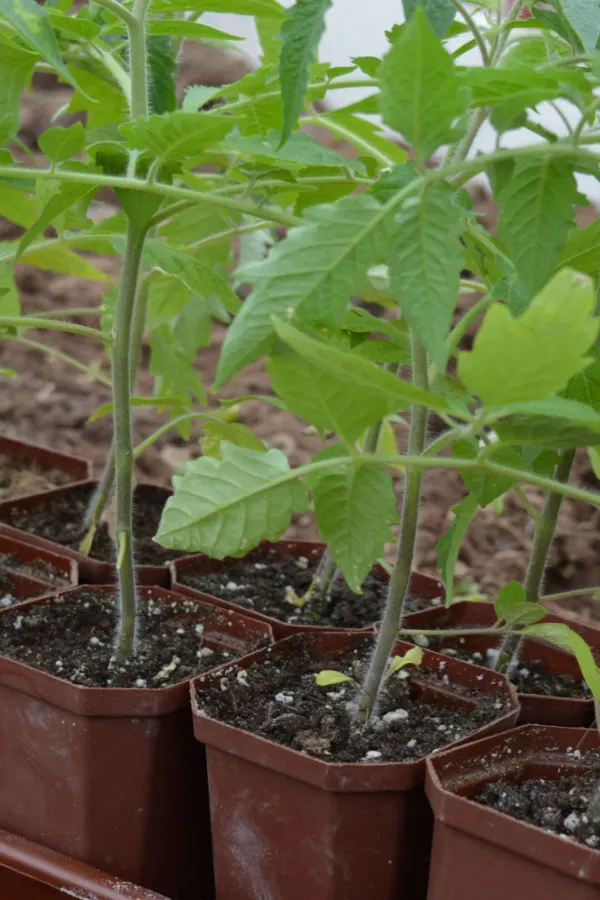If there is one task that gardeners often worry about more than any other in late winter, it’s trying to figure out when to start their tomato plants indoors from seed at just at the right time!
Unfortunately, if you start your seeds indoors too early, it can create all kinds of issues. There is nothing worse than having plants that have already outgrown their space indoors and you still have weeks to go before the weather will allow you to plant outdoors.
Quite often, it forces gardeners to transplant their seedlings into larger containers. In addition, it becomes more and more difficult to get your plants the proper light, let alone find enough space indoors to keep the massive jungle of plants alive and well.

Of course, on the flip side, it can be just as frustrating when you start your seeds too late. If plants are still weak and small, they simply can’t handle the stress of going into the garden outdoors. And even if they somehow survive, it can delay a tomato harvest by weeks – and certainly lower yields as well.
As you can see, getting the timing down really can be critical to your tomato plant’s long term health and success. So how do you get it right? How can you plant your seeds indoors to have your plants the perfect size for planting outdoors?
The solution is actually easier than you might think! Success really comes down to following one basic timing formula – and then making sure you have the right lighting in place indoors to help control and regulate the growth of your plants until they are ready for planting day.
How To Know When To Start Tomato Plants Indoors
Knowing Your Average Last Frost Date – How To Know When To Start Tomato Plants
The very first key to success is to find out your specific areas last average spring frost date. This date will be the normal time your location gets a light frost or freeze for the last time in the spring.
It’s important to realize that this is not a guarantee. This date is only the average date for a last frost. However – it’s a great starting point for knowing when to start your seeds. One thing is for sure, it’s best to never use this date to actually plant your transplants outdoors!

One of the biggest mistakes gardeners make is planting too early in the growing season. Even if you avoid frost, the soil is simply too cold early on for plants to develop. As we will cover later in the article, the actual date you want to plant outdoors will be several weeks after your average last spring frost date.
So how can you find your last frost date as your starting point? One of the best resources around for this is the Farmer’s Almanac website. Simply type in your city or zip code and it will instantly tell you the last average spring frost. It will even give you the first average fall frost for your area too! See: Farmer’s Almanac 2024 First and Last Frost Dates
A Simple Formula For Starting Tomato Plants
Now that you have your last average frost date in hand – it’s time to use a very easy and simple formula for knowing when to start your seeds. Simply take your average last frost date and subtract seven (7) weeks from it. This will be the day you want to start your seeds indoors. And here is how and why the formula works:
On average, it will take tomato seeds about one week to germinate. It then takes about eight full weeks of growing before they are big enough to be healthy, strong transplants. This accounts and leaves enough time for strong indoor growth as well as time outdoors to harden your tomato plants off before planting day. See: How To Harden Off Seedlings & Transplants Before Planting

Using the timing above, you need to have nine weeks of growth from the day you plant your seeds. So why start them only seven weeks before your last average frost? Because you actually want to aim to plant outdoors two weeks after your areas average last frost date.
Getting Your Planting Date Perfect
As an example, if your average last frost date is May 14th, you will want to aim to plant outdoors on May 28th. By counting back nine weeks from May 14th and starting seeds on the 26th of March, your plants will have 9 full weeks of growing and be ready to rock!
Allowing an extra two weeks for plants to grow after the average last frost day lets the soil warm up. And warm soil is vital to strong, early root growth. But that additional two weeks also greatly helps lower the risk of plants getting hit by a late frost.
Proper Indoor Lighting – How To Know When To Start Tomato Plants Indoors
Last but not least, to get your plants to grow both strong and steady while indoors, it’s important to provide your indoor seedlings with a proper source of light. Strong, steady light will keep plants on track perfectly for 9 weeks of growth. And for tomato seedlings, that means artificial light and not light from the sun.
Growing in windows or sunny rooms will not allow your plants to develop correctly. Instead of strong, healthy transplants, you will end up with crooked, weak, long-stemmed plants that spent their weeks indoors stretching for the far away sun.
Listen In To Our Podcast Below On How To Jump Start Your Tomatoes After Planting!
By using simple LED or fluorescent lights a few inches over your seedlings, seedlings will grow strong, steady and healthy. You do not need expensive grow lights, but you should be placing your plants under artificial lighting twelve to fourteen hours each day. See: The Best Lights To Use For Starting Seeds Indoors
This simple approach of starting seeds while giving them perfect lighting will all but ensure tomato plants that are strong and healthy for planting day. Here is to knowing just when to start your tomato seeds indoors. And, of course, to growing your best tomato crop ever this year!
This Is My Garden
Follow Our Facebook Page For Great Gardening Tips And Advice! This Is My Garden Facebook Page
This Is My Garden is a garden website created by gardeners, for gardeners. Jim and Mary Competti have been writing gardening, DIY and recipe articles and books and speaking for over 15 years from their 46 acre Ohio farm. They publish three articles every week, 52 weeks a year. Sign up today to follow via email, or follow along!
